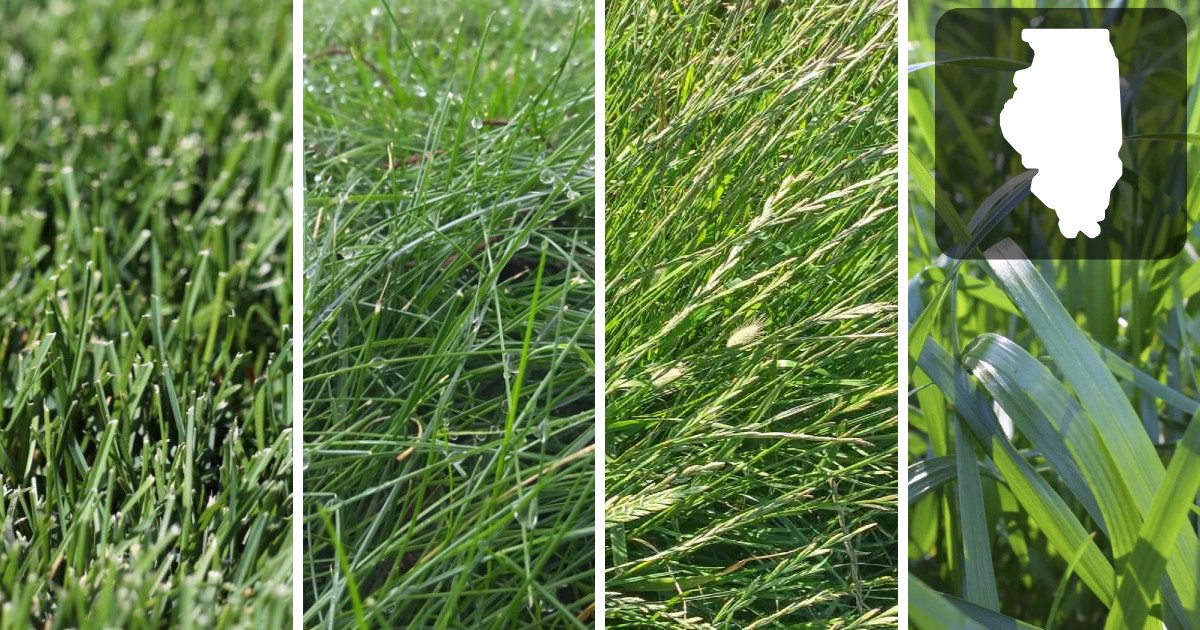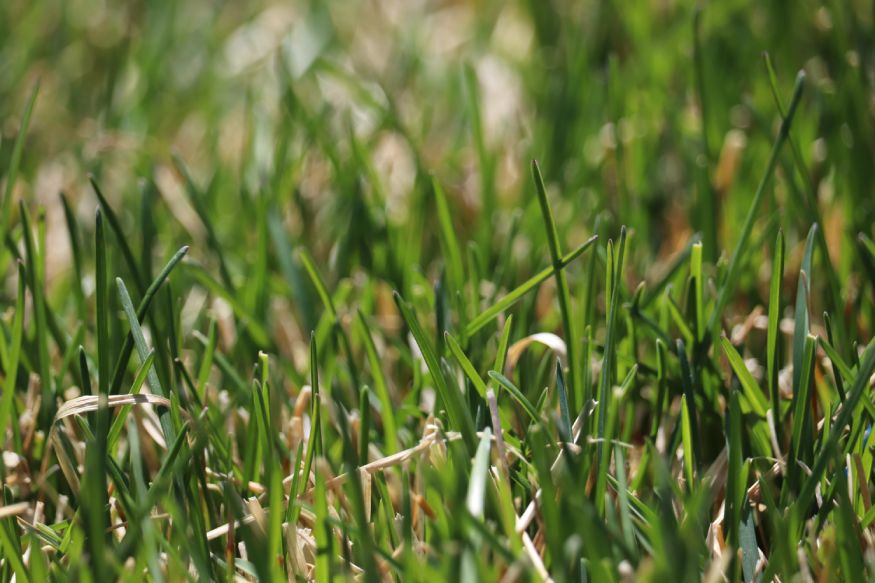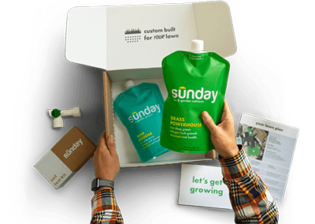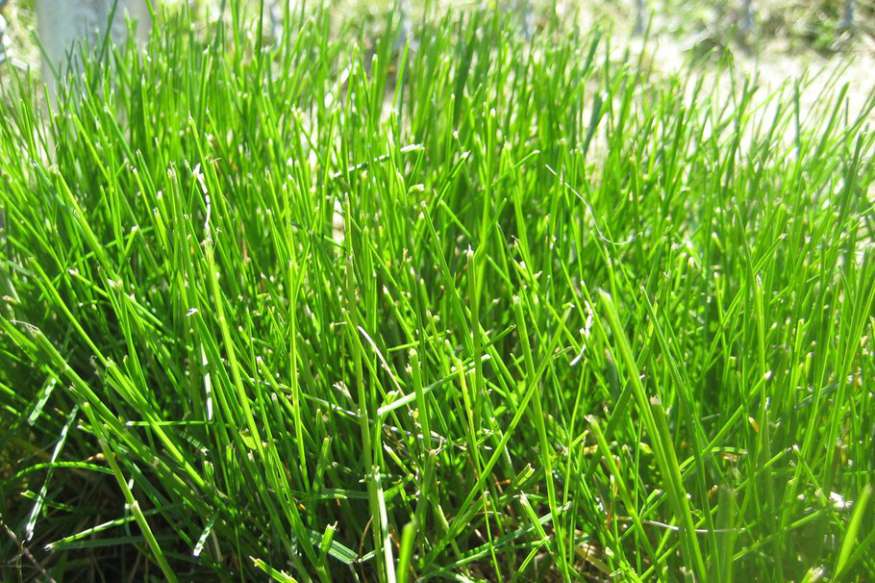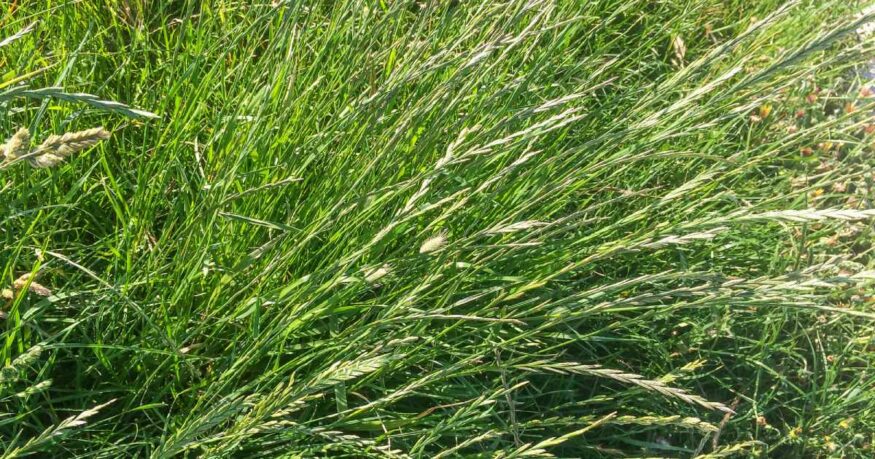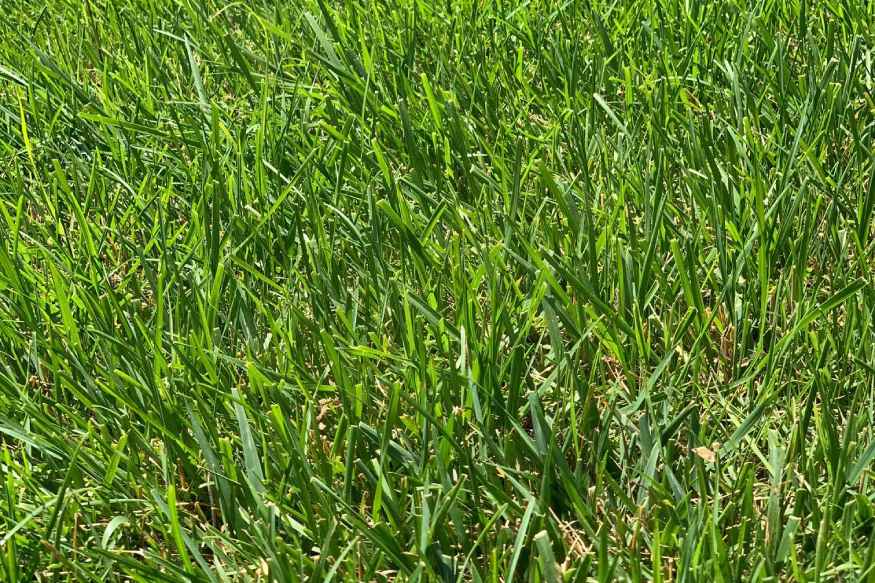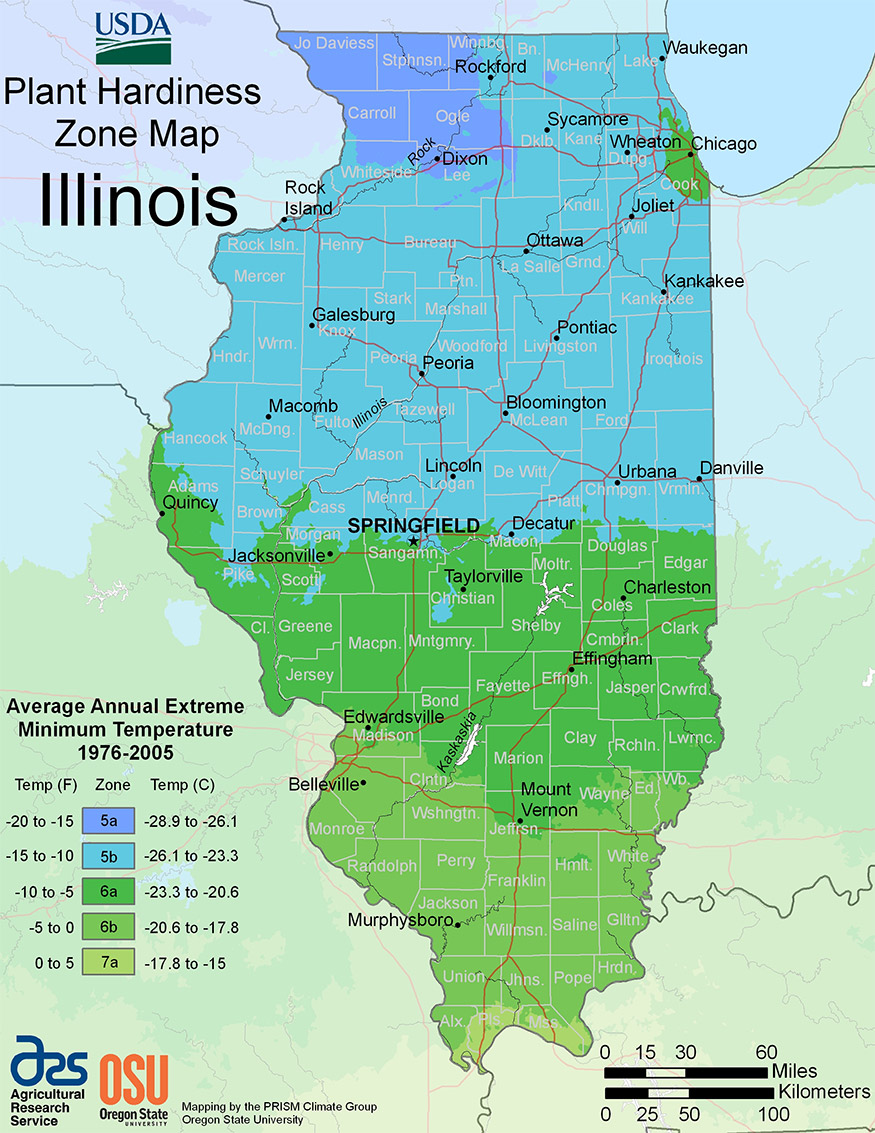Illinois is known for its harsh weather conditions, which can make it difficult for grass to grow and thrive. However, with the right choice of grass seed, it is possible to have a lush and healthy lawn.
Kentucky Bluegrass is a popular option, known for its hardiness and ability to withstand the challenges of growing in Illinois, such as extreme temperatures, heavy rainfall and high humidity. However, there are several other options available, and it is important to choose a grass seed that is well-suited to the specific conditions of your lawn.
In this article, we will explore the best grass seeds for Illinois and provide a comprehensive guide to help you make an informed decision.
[ez-toc]
Kentucky Bluegrass
| Also Known As | Poa pratensis L. |
| Type of Grass | Cool season perennial |
| Optimal Zones | Northern cool season zone, transition zones |
| Root Structure | Shallow |
| Winter hardiness | Excellent |
| Shade tolerance | Poor to Good |
| Water Requirements | High |
| Drought Tolerance | Poor |
| Self Repair Capacity | Excellent |
| Overall Maintenance Requirements | High |
Why Kentucky Bluegrass is The Most Popular Choice For Illinois
Kentucky Bluegrass is the most popular choice among Illinois homeowners and is known for its durability, hardiness, and attractive appearance. Despite its popularity, Kentucky Bluegrass requires moderate to high maintenance, including fertilizing, mowing, and watering, to keep it looking good.
Kentucky Bluegrass is a cool-season grass that is prized for its beauty and ability to recover from traffic wear. This grass prefers full sun but can tolerate light shade and prefers deep, fertile soils in which to grow. A mix with other cool-season grasses is often preferred in home lawns as it strengthens the lawn against summer heat, disease, and shade and generally makes it a lower-maintenance grass.
When choosing Kentucky Bluegrass, it is important to consider both the pros and cons.
On the plus side, Kentucky Bluegrass gives a cleaner cut than grasses with tougher blades like tall fescue, has better cold tolerance than perennial ryegrass or tall fescue, and has good disease tolerance when managed well. Additionally, it goes dormant during droughts, which means it is not likely to die, and has an aggressive rhizome system that helps the turf recover from wear and tear.
On the downside, Kentucky Bluegrass has a high water requirement, a shallow root system, and low shade tolerance. It is also not a high-traffic grass and is prone to thatch, disease, and insects. When considering Kentucky Bluegrass, it is important to choose the cultivar that best suits your lawn, as the growing requirements of different cultivars vary widely.
Looking for the best grass seed for your region?
Our smart lawn plans are designed to work perfectly with your local soil and climate conditions, without any of the toxic stuff.
Use the code EHG20 for an instant $20 discount!
- Personalized lawn care: Custom lawn plans based on soil analysis, climate data, and your specific lawn needs.
- Convenience with a conscience: Products that are not only easy to use but also safe for you, your pets, and the planet.
- Science-backed formulas: Bio-based formulas contain effective, natural ingredients like seaweed, molasses, and iron.
- Expert support: Get one-on-one guidance from a real person and rest easy with Sunday's satisfaction guarantee.
Fine Fescue
What Makes Fine Fescue A Great Grass For Illinois
Second on the list of popular grass seeds in Illinois is the fine fescue, which is perfect for new lawns and property owners with little experience. It is adaptable to shade and requires less maintenance than Kentucky Bluegrass, making it a great option for those who lead a busy life and have little time or energy to spare for lawn care.
Fine fescue includes a few subtypes of popular grasses such as:
- red fescue
- chewings fine fescues
- sheep fescue
- and hard fine fescues.
These grasses have a fine texture and are primarily used in different mixtures to establish variations of light intensities. Fine fescues are hardy enough to endure extreme temperatures, poor soil quality, low moisture, and foot traffic, and they are eco-friendly and disease-resistant.
However, fine fescue does have its drawbacks. It tends to grow in tufts or thatches, so it’s best when mixed with other seeds, and it is less tolerant of foot traffic. It is also susceptible to some diseases and may go dormant during hot weather or drought.
The pros of fine fescue include moderate to high shade tolerance (not full shade), the ability to choose a species that best suits your lawn, infrequent mowing, and low nitrogen requirements. It also works well in sun-shade cool-season mixes, is soft to walk on barefoot, and is ideal for cool, humid climates. Some species even have moderate to high salt tolerance, making them a great choice for areas with road salts.
Overall, fine fescue is a good choice for Illinois residents looking for a low-maintenance, eco-friendly option for their lawn.
Perennial Ryegrass
| Also Known As | Lolium perenne L. |
| Type of Grass | Cool season perennial |
| Optimal Zones | Mild northern zones |
| Root Structure | Deep |
| Winter hardiness | Good to excellent |
| Shade tolerance | Moderate |
| Water Requirements | High |
| Drought Tolerance | Good |
| Self Repair Capacity | Excellent wear tolerance |
| Overall Maintenance Requirements | Moderate to high |
Why Perrenial Ryegrass Grows Well in Illinois
Perennial Ryegrasses are one of the most popular grass seeds for Illinois, known for their quick growth, durability, and ability to withstand heavy foot traffic.
Often compared to Kentucky Bluegrass, this grass seed is well-regarded for its disease and heat resistance, making it a great option for homeowners who want a lawn that can withstand various weather conditions. However, Perennial Ryegrass requires consistent care and maintenance to keep it looking its best, which is why it’s often used as part of a grass seed mixture rather than on its own.
If you’re looking for a grass seed that grows quickly, Perennial Ryegrass could be just what you need. This grass seed often germinates within ten days, making it a popular choice for filling in empty patches or replacing dead grass. Perennial Ryegrass is also a nurse grass, meaning it provides shade and protection to other grass species that take longer to germinate. This grass seed is a great option for reclaiming construction areas or preventing erosion on steep banks.
While it’s durable and disease-resistant, it may struggle in shady areas and can be prone to patchiness, so it’s important to consider the pros and cons before making a decision. However, newer cultivars of Perennial Ryegrass have improved the texture and reduced the risk of shredding when mowing, making it a top choice for lawns in the transition zone and less extreme areas of the north.
Tall Fescue
| Also Known As | Lolium arundinaceum (formerly Festuca arundinacea) |
| Type of Grass | Cool season perennial |
| Optimal Zones | Northern through transition zones |
| Root Structure | Deep |
| Winter hardiness | Excellent |
| Shade tolerance | High |
| Water Requirements | Medium to High |
| Drought Tolerance | Excellent |
| Self Repair Capacity | Limited |
| Overall Maintenance Requirements | Low |
Why Tall Fescue Is a Popular Grass seed Choice in Illinois
Tall fescue is a cool-season, clump-type grass that is an excellent option for homeowners in the warmer regions of Illinois, particularly the southern part of the state. Known for its exceptional drought and heat resistance, as well as its recovery ability and attractive appearance, tall fescue is a wise investment for those who want a lawn that will stand the test of time. With its deep root system, tall fescue is able to withstand hot temperatures and is tough enough to handle consistent foot traffic.
Planting tall fescue in mid-August is the best way to ensure that it will establish itself quickly and flourish. Although tall fescue is known for its soft texture and disease-resistance, it is important to note that it has moderate shade tolerance and may not be the best choice for shady areas. Additionally, it may be considered invasive and disruptive to other plant species.
The pros of tall fescue include its deep root system, good drought resistance, heat tolerance, moderate shade tolerance, and popularity in the southern cool-season zone and across the transition zone. Its color ranges from medium to deep green, it can be mowed tall, and it has a low to moderate fertilizer requirement.
However, tall fescue has its downsides as well. It is unable to repair bare spots or thinning on its own and requires frequent mowing. Additionally, it may go dormant in the summer without supplemental water.
Despite its limitations, tall fescue is a standout cool-season grass that thrives under moderate maintenance and is a wise choice for homeowners who want a lawn that will stand the test of time.
Illinois’ Climate And Growing Challenges For Lawns
Soil Conditions
The soil in Illinois varies from region to region, but most of the state has fertile soil that is well-drained. However, some areas may have soil that is heavy clay or sandy, which can impact the growth of lawns.
Weather
The hot summers and cold winters in Illinois can present challenges for growing lawns. During the summer, the high temperatures can cause grass to go dormant, while the harsh winters can damage or kill grass.
Pests and Diseases
Illinois is also prone to pests and diseases that can affect lawns. Homeowners should be aware of common problems such as grubs, mites, and fungus and take steps to protect their lawns.
While Illinois has fertile soil and a temperate climate, the state still presents challenges for growing lawns. Homeowners should consider the soil conditions, weather, and potential pests and diseases when choosing the best grass for their lawn.
Looking for the best grass seed for your region?
Our smart lawn plans are designed to work perfectly with your local soil and climate conditions, without any of the toxic stuff.
Use the code EHG20 for an instant $20 discount!
- Personalized lawn care: Custom lawn plans based on soil analysis, climate data, and your specific lawn needs.
- Convenience with a conscience: Products that are not only easy to use but also safe for you, your pets, and the planet.
- Science-backed formulas: Bio-based formulas contain effective, natural ingredients like seaweed, molasses, and iron.
- Expert support: Get one-on-one guidance from a real person and rest easy with Sunday's satisfaction guarantee.
Frequently Asked Questions
What is the best grass seed for Illinois?
The best grass seed for Illinois depends on your specific location, soil type, and desired lawn appearance. Tall fescue is a popular choice for warmer regions, while Kentucky bluegrass is a common pick for cooler areas. A grass seed blend that includes both tall fescue and Kentucky bluegrass is also a great option.
What factors should I consider when choosing the best grass seed for my Illinois lawn?
When choosing the best grass seed for your Illinois lawn, consider your local climate, soil type, and the amount of shade and sun your lawn receives. Additionally, think about how much maintenance you are willing to put into your lawn and how much foot traffic it will receive.
Are grass seed blends the best option for Illinois lawns?
Grass seed blends can be a great option for Illinois lawns as they provide a mixture of grasses that can complement each other and offer a fuller, more attractive lawn. Consider a blend that includes both tall fescue and Kentucky bluegrass for the best results.
What is the best time to plant grass seed in Illinois?
The best time to plant grass seed in Illinois is in the spring or early fall. Planting in the spring allows for cooler temperatures and rain to promote germination, while planting in early fall provides time for the grass to establish roots before winter.
Can tall fescue grow in shaded areas in Illinois?
Tall fescue prefers full sun, but can tolerate some shade. If your Illinois lawn has a lot of shade, it may be best to consider a different grass seed, such as Kentucky bluegrass or a shade-tolerant grass seed blend.
